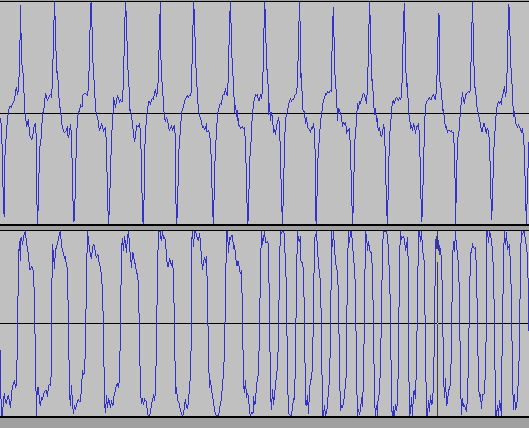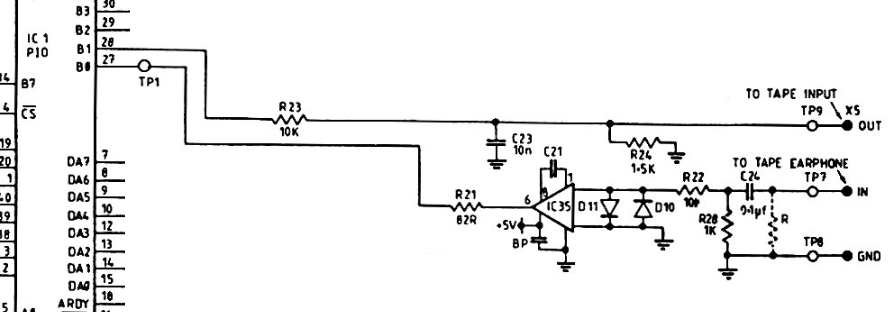The higher frequency in the RHS of the bottom signal is perfectly normal. Microbee uses 2400Hz for 1 bits, 1200Hz for 0 bits. The two signals shown are representative only and were recorded at different times.
In relation to where this signal was measured, from the Microbee's PIO pin 28, through the top half of the circuit shown below, then through the above described voltage divider, then into the iPhone where is was recorded. ie: the voltage divider would be across OUT/GND at the far right of the circuit below.
To save referencing the other question, here's the Microbee's cassette interface circuit:
MicrobeeSchematic http://www.toptensoftware.com/fpgabee/MicrobeeCassettePortSchematic.png
and a description of it:
The cassette data output consists merely of an RC network which
accepts a signal from DB1, pin 28 of the PIO. The signal is
attenuated and then decoupled prior to sending it to the cassette
recorder MIC input. This signal appears on pin 3 of the 5 pin DIN
socket.
The cassette data input circuit is slightly more
complicated. The input from pin 5 of the DIN socket passes first to
an attentuator -decoupler. Following this is a CA3140 op-amp, to
allow a wide range of input levels to be squared up before the signal
is passed to pin 27 of the PIO, DBO. The two diodes across the
inverting and non-inverting inputs to the op-amp clip any input
signals greater than the diodes' forward voltage in either direction.
The 47pF capacitor is required by the CMOS op-amp for
precompensation.

